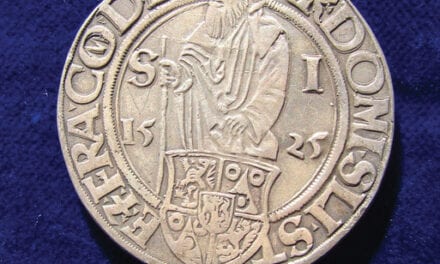
“Receiving a second refusal, he drew a gun and shot at her.”
Carlos Antoni Cosme Damia Casagemus i Coll was born to upper-class parents in the city of Barcelona, Spain in 1880. His father spoke several languages, worked as the general secretary of a company, and was also vice-consul of Norway and Sweden in Spain and later of the U.S. His sister became a well-known composer. Carlos was the wild child, a modernist painter susceptible to depression and mood swings; in his teens, he became a self-declared anarchist, a Catalan nationalist, and spent much time in a haunt of Catalan modernist painters called The Four Cats in Barcelona, which is still a restaurant today. In 1899, he met a like-minded painter a year younger than himself, Pablo Ruiz Picasso, who was born to middle-class parents in Malaga in southern Spain, his father a professor of art and curator of a local museum. Casagemus and Picasso quickly became close friends, traveled around Spain together, and shared a studio in Barcelona. They frequented area brothels where it became known that Casagemus was impotent. Early in 1900, both Picasso and Casagemus had exhibits at the Four Cats; Picasso’s paintings were well received while Casagemus’ work received mixed reviews. All of these factors must have played into Carlos’ depression. Later that year, the two friends and another Catalan artist, Ramon Pichot, decided to travel to Paris, the epicenter of the art world at the time. They all had good Spanish friends in Paris. Pichot was to become a friend of Salvador Dali’s parents and mentored their son in his younger years.
 The corner house, ca. 1905. Wikimedia
The corner house, ca. 1905. Wikimedia
The pink house on the corner of the “Street of the Drinker” was built sometime before 1850 when Montmartre was not even a part of Paris and the famed cathedral of Sacré Coeur but a dream. The building, though at the time dilapidated, dirty, and certainly not pink, was there when Casagemus and Picasso lived in a nearby studio belonging to a friend of Pichot, and they certainly passed by it very often.
Laure Antonie Gargallo was born in the same year as Casegamus, and while young had married a man named Vital Florentin. Reputedly a ballerina, she may have met Pablo and Carlos through her friend, Louise Lenoir (known as “Odette”). Picasso began an affair with Odette while Casagemus became infatuated with Laure Florentin, who called herself Germaine. The two women, among others, became models for the painters and were their constant companions. However, Carlos’ inability to consummate his relationship with Germaine, led him to fall into a deep depression and he often talked of suicide and attempted it at least once.
Picasso suggested they return to Spain for Christmas and they saw the New Year in with Picasso’s family, however, Casagemus’ bad behavior toward his family so embarrassed Pablo that he put him on a boat back to Barcelona. Lovesick, Carlos didn’t stay there, but returned immediately to Paris early in 1901 to pursue his love for Germaine, to whom he had been writing daily. Carlos asked her to live with him, but she was still a married woman and she refused. Downcast once more, he decided to return to Spain, and in February of that year organized a farewell Paris dinner, inviting Germaine and a few other friends. His good friend Picasso was absent since he had remained in Spain. The riotous dinner party on the 17th of February was going well, probably with much wine and absinthe flowing, until around nine o’clock when Casagemus again asked Germaine to marry him. Receiving a second refusal, he drew a gun and shot at her. The bullet grazed her forehead and she fell to the floor, but in the ensuing confusion, Carlos turned the gun on himself and died later that night in hospital from a wound in his right temple. Apart from the graze and, no doubt, shock, Germaine was unhurt. Picasso was deeply affected by his friend’s death and it is said to be what initiated his “Blue Period.” Many of his works at the time featured his dead friend.
Returning to Paris in May, Pablo took up with Germaine for a time, who continued to model for him, and she remained a close friend for the rest of his life. She divorced Florentin in 1904 and married Ramon Pichot and together they bought the beige, run-down building on the corner of rue des Saules and Abreouvoir in 1906, opening it as a reasonably priced café and boarding house for writers and artists. Legend has it that the building was painted pink after Germaine and Ramon had made a visit back to Barcelona, where the colors inspired her. Green shutters and lettering completed the color scheme. It was christened “La Maison Rose”—The Pink House—and became the haunt of many famous painters and writers, among which were Albert Camus, Maurice Utrillo, Suzanne Valadon and, of course, Pablo Picasso, all drawn there by Germaine’s magnetic personality. It is also likely that Renoir, Degas, Cézanne, Braque, van Gogh, and other Montmartre inhabitants would have spent time there enjoying the bohemian lifestyle that the area was famous for.
The Pink House, ca 1911, Wikimedia
After Germaine died in 1948, Béatrice Miolano bought the café and installed a manager who reigned for 25 years. In this period, La Maison Rose became a tourist trap and the locals no longer visited. The building was even painted white in 1970 and all the green lettering disappeared. Today, the now famous restaurant is owned by Laurence Miolano, granddaughter of Béatrice, and has been restored to its original color scheme with a full renovation of the interior in 2018. With the quaint Museum of Montmartre in Renoir’s house just down the road and the great cathedral of Sacré Coeur but a short walk, La Maison Rose is one of the most visited tourist sites in Montmartre. It remains a thriving restaurant1 and you can enjoy their fine traditional French cuisine—if you can get a reservation!
Notes: 1 bit.ly/BghiUv
© David Cuin 2021



